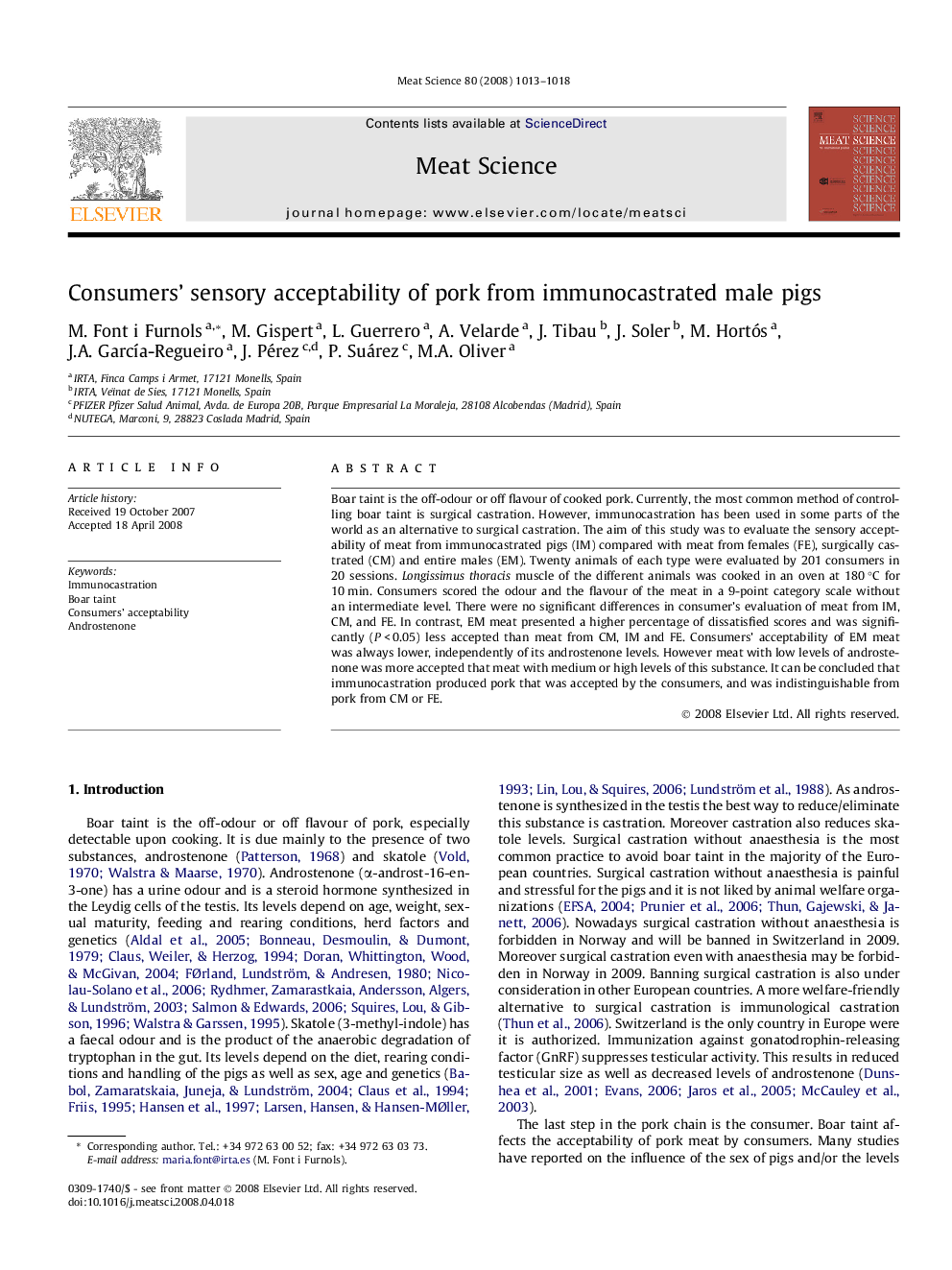| Article ID | Journal | Published Year | Pages | File Type |
|---|---|---|---|---|
| 2450670 | Meat Science | 2008 | 6 Pages |
Boar taint is the off-odour or off flavour of cooked pork. Currently, the most common method of controlling boar taint is surgical castration. However, immunocastration has been used in some parts of the world as an alternative to surgical castration. The aim of this study was to evaluate the sensory acceptability of meat from immunocastrated pigs (IM) compared with meat from females (FE), surgically castrated (CM) and entire males (EM). Twenty animals of each type were evaluated by 201 consumers in 20 sessions. Longissimus thoracis muscle of the different animals was cooked in an oven at 180 °C for 10 min. Consumers scored the odour and the flavour of the meat in a 9-point category scale without an intermediate level. There were no significant differences in consumer’s evaluation of meat from IM, CM, and FE. In contrast, EM meat presented a higher percentage of dissatisfied scores and was significantly (P < 0.05) less accepted than meat from CM, IM and FE. Consumers’ acceptability of EM meat was always lower, independently of its androstenone levels. However meat with low levels of androstenone was more accepted that meat with medium or high levels of this substance. It can be concluded that immunocastration produced pork that was accepted by the consumers, and was indistinguishable from pork from CM or FE.
